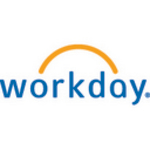What is our primary use case?
We primarily use the solution for basic reporting, charts, and graphs.
What is most valuable?
There is no installation required. It is browser-based.
We like that you can look at groups, users, and like that we can take advantage of column-level and row-level restrictions.
The SpiceDB capacity is pretty large compared to other contemporary options, including competitive software like Power BI, Tableau, etc. It has better performance with respect to large data sets.
The solution is simple to implement.
Managers can build a dashboard, and over a period of time, they can build very complex dashboards as well.
It is easy to learn. There is a decent level of documentation already available around QuickSight. There are multiple YouTube channels, videos, and tutorials available, and there is a QuickSight community from where you can get help. This helps users work with the basic functionality of QuickSight.
The solution is stable.
It is quite scalable.
What needs improvement?
I just want a few more features to be added. We'd like an increase in the number of visuals, and we find the graphs are still very restricted.
We need reporting around telementary use and QuickSight users, including which user is opening which dashboard, at what time, and for how long he is using the dashboard. They built reader access based on the session. However, they don't report it anywhere.
I was expecting this very basic thing, yet it has not been rolled out. In order to know which user is opening which dashboard and at what time, I have to basically deep dive into the CloudTrail log. Even there, it's not a very detailed log. It does not give you an idea about the session or session duration. It only gives you an idea about whether a dashboard was loaded or not.
Currently, auto-reporting is limited to some 30 times a day. As it is, if you want to set a data set to get it refreshed every half an hour, you cannot achieve it. We would like to have more auto-reporting.
For how long have I used the solution?
I've used the solution for three to four years.
What do I think about the stability of the solution?
Stability-wise, it is decent. It's reliable. There are no bigs or glitches. It doesn't crash or freeze.
What do I think about the scalability of the solution?
It is very scalable.
There are data sets where I have millions of records, and the size of the data set is beyond 100 GB as well.
We have more than 500 users on the solution currently.
How are customer service and support?
There is a lot of documentation available that can help users learn the solution and troubleshoot.
On multiple occasions, I have had to check with the AWS support regarding QuickSight, and the support is pretty decent around it.
How would you rate customer service and support?
Which solution did I use previously and why did I switch?
I did not previously use a different solution.
I did work with Power BI. Power BI had too many visuals. It's pretty mature, however. Power BI is a very old reporting tool. It has great functionality, yet it is costlier. Still, it is not very scalable as it is limited to 10 GB only. Whereas in QuickSight, you can have beyond 10 GB easily. A few data sets we have are beyond 110 GB.
How was the initial setup?
The solution is online; you don't have to install anything. It's user-friendly so it is easy to get started. If you have users on your AWS account, you can just enable QuickSight access for them.
User management is very easy.
What was our ROI?
The ROI a company might se depends on how they are using it. It's a service. If you are not using it efficiently, then obviously, the ROI would be lower.
What's my experience with pricing, setup cost, and licensing?
It's not a one-time purchase.
It's like they build you on three fronts. One is the SpiceDB capacity that you buy. Another is the author account you create in QuickSight and the reader's account. For an author account and SpiceDB capacity, there is a fixed charge. For the author, it's $24 per month. For SpiceDB capacity, it's somewhere at around $0.30 per GB per month. For the reader account, there is no charge. It's pay per session, and I don't know the price per session.
You need to be aware of how you have it set up. Even though we have, let's say, 50 authors, for example, out of those 50 authors, only two or three authors were creating dashboards. The rest of the authors were sitting idle. At that point, we got billed unnecessarily. Later on, we figured it out, and we removed the unnecessary authors.
What other advice do I have?
We're a customer and end-user.
One big lesson that I have learned is that first, you identify what kind of reporting you want to do. Then, just go and check whether that kind of reporting is already available in QuickSight or not. If yes, then you have to think about the cost. It's pretty much in your face, and you can precalculate it without any issue, and then you have to just play around with a couple of average users.
I'd rate the solution eight out of ten.
Disclosure: My company does not have a business relationship with this vendor other than being a customer.




















